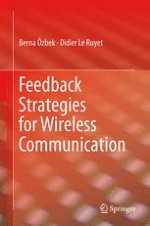
2014 | OriginalPaper | Buchkapitel
6. Feedback Strategies for Multiantenna Multiuser Systems
verfasst von : Berna Özbek, Didier Le Ruyet
Erschienen in: Feedback Strategies for Wireless Communication
Verlag: Springer New York
Aktivieren Sie unsere intelligente Suche, um passende Fachinhalte oder Patente zu finden.
Wählen Sie Textabschnitte aus um mit Künstlicher Intelligenz passenden Patente zu finden. powered by
Markieren Sie Textabschnitte, um KI-gestützt weitere passende Inhalte zu finden. powered by